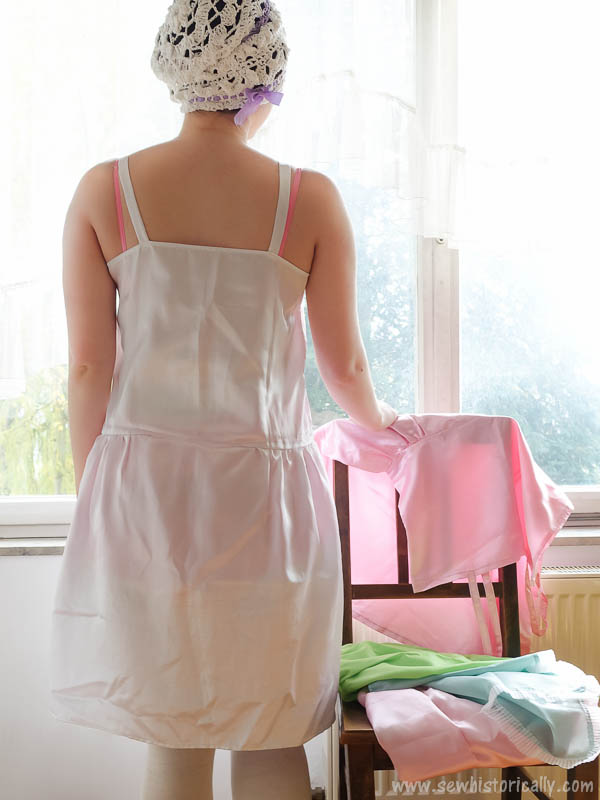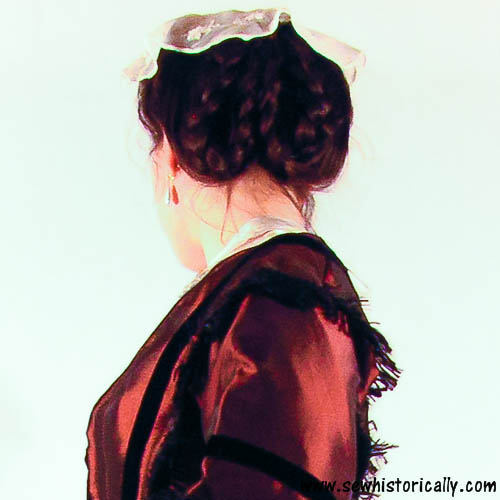‘Persons are the best dressed when you cannot remember how they were dressed.’

Continue reading How To Dress With Taste In The Victorian Era
‘Persons are the best dressed when you cannot remember how they were dressed.’

Continue reading How To Dress With Taste In The Victorian Era

In the 1920s, boudoir caps were worn in the morning to hide the unkempt hair, as well as in the night to keep the set finger waves in place. Continue reading 1920s Boudoir Cap
For my mid-18th century blue linen jacket I repurposed the fabric from an 1980s dress – I was thrilled when I tested the fabric and it was linen! 🙂 But it meant I just had a limited amount of this fabric. The color was also perfect as linen could’ve been dyed blue with indigo or woad in the 18th century. Continue reading 18th Century Blue Linen Jacket
Grow your own Easter grass this Easter! Continue reading How To Grow Your Own Easter Grass
In the 1850s, three stages of mourning were worn: Deep mourning, second mourning and half mourning – each stage had its own requirements. Women had to dress accordingly in order not to become a social outcast. Mourning was less strict for working men, whereas young men usually wore mourning as long as women.
Close or deep mourning was worn for the nearest relations: Continue reading Mourning In The 1850s
Three stages of mourning were worn in the 1860s: Close or deep mourning for the nearest relations. Second mourning for distant relatives or by those who have previously worn deep mourning. Slight or half-mourning was the third mourning stage before mourners returned to wear ordinary dress. Each stage had its own requirements. It was a social obligation to follow the mourning etiquette in order not to become a social outcast. Continue reading Mourning In The 1860s
This is my first historical costume that I made many years ago: an 1840s day dress! It’s called a day dress because this type of dress was worn in the daytime. Continue reading 1840s Maroon Day Dress

This late 1860s braided hairstyle is inspired by this 1870 fashion plate (the one in the bottom left corner) and by Empress Elisabeth’s braided hairstyles. Here’s also a similar hairstyle (the Catalina). I parted my hair down the middle, made two braids, laid them into loops and secured them with hairpins.
This Victorian paletot is the first coat I’ve sewn and I’m really pleased with how it turned out! 😀 I used gray fulled 100% wool fabric – so the paletot coat is waterproof. I’ve already worn it in rain, snow and wind – and stayed warm and dry. Continue reading Victorian Grey Wool Paletot Coat
Green custard ‘will be found both delicious and ornamental for a dessert, or supper table.’
The original recipe for this unusal green custard was published in ‘Miss Leslie’s New Receipts For Cooking’ in 1852. The Victorian custard is naturally colored with spinach! 😀 Continue reading How To Make 1852 Green Custard (Without Food Coloring)